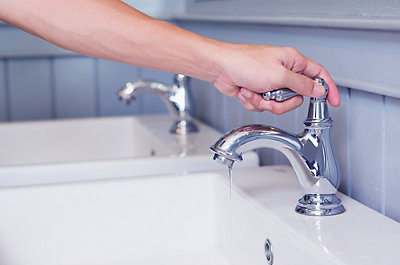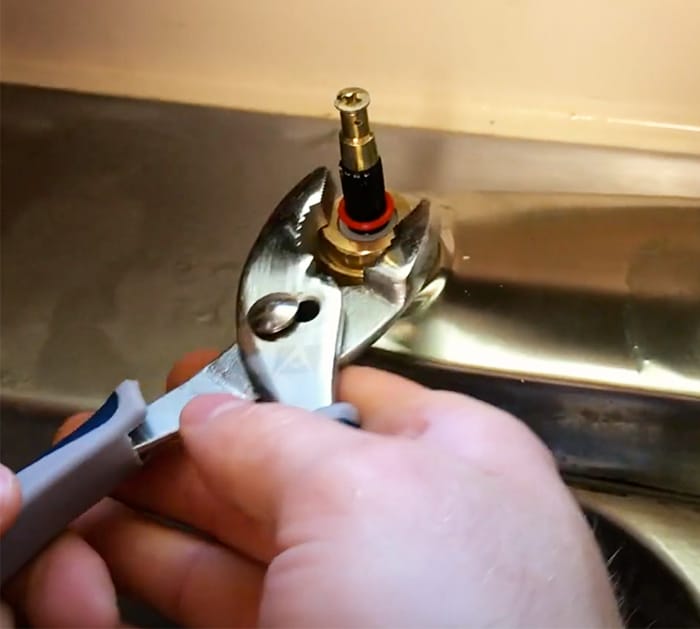Which It's Necessary to Repair a Leaking Faucet
Which It's Necessary to Repair a Leaking Faucet
Blog Article
The article on the next paragraphs on the subject of How to Fix a Dripping or Leaky Faucet is incredibly enlightening. Give it a try and make your own personal final thoughts.

Dripping taps may feel like a minor trouble, but their influence goes beyond simply the annoyance of the audio. From wasting water to incurring unneeded financial costs and wellness threats, disregarding a trickling faucet can result in numerous effects. In this article, we'll explore why it's critical to address this usual family concern promptly and efficiently.
Wastage of Water
Ecological Effect
Leaking faucets add dramatically to water wastefulness. According to the Environmental Protection Agency (EPA), a single faucet trickling at one drip per secondly can lose greater than 3,000 gallons of water each year. This not just stress water sources yet additionally influences communities and wild animals dependent on them.
Financial Expenses
Boosted Water Costs
Past the ecological effect, dripping taps can blow up water bills considerably. The accumulated wastefulness in time converts right into higher utility expenditures, which could have been stayed clear of with prompt repair work.
Possible Residential Or Commercial Property Damages
Furthermore, long term dripping can cause harm to components and surfaces surrounding the tap. Water buildup can create staining, corrosion, and even structural issues if left ignored, leading to added fixing prices.
Wellness Concerns
Mold and Mildew Development
The consistent existence of wetness from a leaking faucet creates a perfect environment for mold and mildew and mold growth. These fungi not just jeopardize indoor air high quality however also posture health and wellness risks, particularly for people with breathing problems or allergies.
Waterborne Diseases
Stationary water in dripping faucets can come to be a breeding ground for microorganisms and other microorganisms, enhancing the danger of waterborne illness. Impurities such as Legionella germs thrive in stationary water, possibly bring about major ailments when ingested or inhaled.
DIY vs. Expert Repair
Advantages and disadvantages of Do It Yourself Fixing
While some might try to fix a dripping faucet themselves, DIY repair work feature their very own collection of obstacles. Without correct understanding and devices, do it yourself attempts can exacerbate the concern or result in insufficient repair services, prolonging the trouble.
Benefits of Employing a Professional Plumber
Hiring an expert plumber ensures that the underlying root cause of the leaking tap is dealt with properly. Plumbers have the expertise and tools to detect and repair faucet concerns successfully, saving time and reducing the risk of more damage.
Step-by-Step Guide to Fixing a Dripping Tap
Tools Required
Prior to attempting to deal with a trickling faucet, collect the required devices, including a flexible wrench, screwdrivers, replacement components (such as washers or cartridges), and plumber's tape.
Usual Tap Issues and Their Solutions
Determine the sort of faucet and the certain concern causing the drip. Typical troubles include worn-out washing machines, rusty valve seats, or malfunctioning O-rings. Refer to producer directions or on the internet tutorials for step-by-step support on repairs.
Preventive Measures
Normal Upkeep Tips
To avoid dripping taps, carry out regular maintenance such as cleansing aerators, checking for leaks, and changing worn-out components promptly. In addition, consider mounting water-saving devices or updating to more effective fixtures.
Relevance of Prompt Repair Works
Resolving dripping faucets as quickly as they're seen avoids additional water waste and possible damages, ultimately saving both water and cash in the long run.
Impact on Property Value
Perception of Well-Maintained Home
Preserving a property in good condition, consisting of resolving upkeep problems like dripping faucets, improves its perceived worth and worth among potential customers or lessees.
Influence on Resale Worth
Properties with properly maintained plumbing fixtures, consisting of faucets, command greater resale values in the property market. Dealing with trickling faucets can add to a positive impact during building evaluations and arrangements.
Environmental Obligation
Private Payment to Preservation
Taking responsibility for taking care of trickling faucets aligns with wider initiatives towards water preservation and ecological sustainability. Every individual's activities collectively make a substantial influence on preserving valuable sources.
Lasting Living Practices
By focusing on punctual repairs and adopting water-saving habits, individuals contribute to lasting living techniques that profit both present and future generations.
Conclusion
Addressing a trickling tap exceeds mere convenience; it's an important step towards conserving water, reducing economic expenses, and guarding health and wellness and residential property. Whether through do it yourself repair work or specialist support, doing something about it to repair trickling faucets is a little yet impactful means to advertise responsible stewardship of resources and add to a much healthier, much more lasting future.
Most Common Reasons for a Leaky Faucet and How to Stop the Drip
Whether it’s your kitchen faucet leaking or a bathroom faucet leaking, one leaky faucet can waste anywhere from three to 30 gallons of water every single day. If the constant drip-drip-drip doesn’t get your attention, your water bill will. The good news is that, by following a few simple steps, chances are pretty good you can fix the problem yourself.
Why is it dripping?
Before you start taking things apart, let’s break down some of the most common causes of a leaky faucet.
Bad O-ring.
A cartridge is a valve that controls the flow of water into the faucet spout. On cartridge faucets there’s an O-ring—the little disc attached to the stem screw that holds the faucet handle in place. If it’s loose or worn-out, it can cause your sink handle to leak. Of course, the cartridge itself could be worn out. If that’s the case, make sure you replace it with the exact same kind.
Corroded valve seat.
The valve seat connects the faucet and the spout. If the leak seems to be coming from the spout, it might be because a buildup of water sediment has corroded the valve seat.
Worn-out washers or seals.
A leaky spout could be caused by a bad washer that rests against the valve seat. It’s just a matter of time before friction takes its toll. It could also be the wrong size washer or one that’s been installed incorrectly. Water sediments can also corrode inlet and outlet seals.
Water pressure.
If the faucet only drips now and then, or when you turn the handles a certain way, you should probably check your home’s water pressure.
Loose or broken parts.
The adjusting ring and packing nuts in the stream screw can become loose over time, causing your sink handle to leak. Try tightening or replacing the packing nut. If the leak is coming from the pipes underneath the sink, you probably have a broken pipe or fitting. If that’s the case, you should definitely call a plumber.
Know your faucet.
Faucets come in a variety of types. Each one has its own assembly—and its own possible causes of leaks. Learning about the four most common kinds of faucets will help you know how to take them apart and make any repairs.
How to stop a leaky faucet
Fixing that leaky faucet doesn’t have to take a lot of time, money, or expertise. It’s usually a simple matter of replacing a worn-out washer or gasket, a loose O ring, or another part. Chances are really good you can do this yourself if you follow these simple steps.
Shut off the water.
Before you tackle the faucet, cut off the water supply to the sink. There should be one valve for hot and one for cold. Hand-turn them clockwise with your hands till they close. If there are no valves under the sink, head to the basement and shut off the main water supply to the house. Then turn on the faucet until it empties out the water that’s still in the line and you’re ready to start. It’s a good idea to cover the sink drain with a plug or a rag so you don’t lose any small pieces and parts while you’re working.

I'm certainly very involved in Leaky Faucets: Why They Happen & What to Do About Them and I'm hoping you appreciated the entire blog posting. Liked our write-up? Please quickly share it. Let another person discover it. Thank you for your time spent reading it.
Report this page